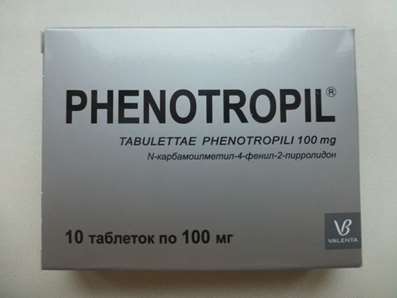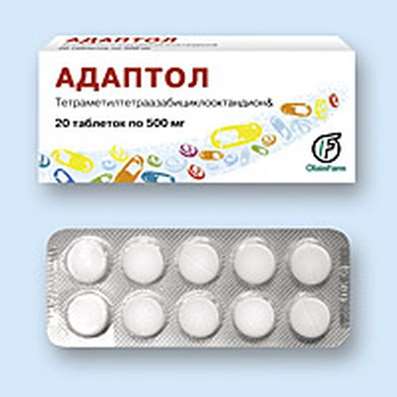Instruction for use: Ambene
I want this, give me price
Dosage form: Solution for intravenous administration; substance powder
Active substance: Acidum aminomethylbenzoicum
ATX
B02AA03 Aminomethylbenzoic acid
Pharmacological group
Inhibitors of fibrinolysis
The nosological classification (ICD-10)
C95 Leukemia of unspecified cell type: Acute non-lymphocytic leukemia; Leukemia undifferentiated; Undifferentiated leukemia; Non-lymphocytic leukemia; Acute leukemia in adults; Non-lymphocytic leukemia
D68 Other disorders of coagulation
D68.8 Other specified disorders of coagulation: Afibrinogenemia; Coagulopathies are hereditary
D69 Purpura and other hemorrhagic conditions: Simple purpura
D69.6 Thrombocytopenia, unspecified: Hemorrhagic diathesis of thrombocytopenic origin; Hemorrhagic syndrome of thrombocytopenic origin; Idiopathic thrombocythemia; Thrombocytopenia; May-Hegglina anomalies; Hereditary thrombocytopathies; Fever with thrombocytopenia
D69.8 Other specified hemorrhagic conditions: Lightning-fast purpura of newborns; Hemorrhagic diathesis of thrombocytopenic origin
J01 Acute sinusitis: Inflammation of the paranasal sinuses; Inflammatory diseases of the paranasal sinuses; Purulent-inflammatory processes of the paranasal sinuses; Infectious-inflammatory disease of ENT organs; Infection of the paranasal sinuses; Combined sinusitis; Exacerbation of sinusitis; Acute inflammation of the paranasal sinuses; Acute bacterial sinusitis; Acute sinusitis in adults; Subacute sinusitis; Sinusitis acute; Sinusitis
J01.0 Acute maxillary sinusitis
J01.1 Acute frontal sinusitis: Frontal acute; Frontite; Rhinosinusitis
J03.9 Acute tonsillitis, unspecified (angina agranulocytic): Throat infections; Acute tonsillitis; Angina; Follicular tonsillitis; Angina alimentary-hemorrhagic; Secondary sore throat; Sore throat primary; Angina follicular; Inflammatory diseases of the tonsils; Catarrhal angina; Lacunar angina; Acute Sore Throat; Tonsillitis; Tonsillitis acute; Tonsillar angina; Follicular sore throat; Bacterial tonsillitis
J04 Acute laryngitis and tracheitis: Cough in diseases of the upper respiratory tract; Laryngitis; Laryngitis acute; Tracheitis acute; Pharyngolaryngitis; Infectious-inflammatory disease of ENT organs
J11 Influenza, virus not identified: Influenza; Influenza in the early stages of the disease; Influenza in children; cold in the chest; Begins flu-like condition; Acute disease parainfluenza; parainfluenza; parainfluenza state; influenza epidemics; The pains of the influenza
J18 Pneumonia without specification of pathogens: Alveolar pneumonia; Community-acquired pneumonia atypical; Community-acquired pneumonia non-pneumococcal; Pneumonia; Inflammation of the lower respiratory tract; Inflammatory lung disease; Shared pneumonia; Respiratory and lung infections; Infections of the lower respiratory tract; Cough with inflammatory diseases of the lungs and bronchi; Croupous pneumonia; Nosocomial pneumonia; Exacerbation of chronic pneumonia; Acute community-acquired pneumonia; Acute pneumonia; Focal pneumonia; Pneumonia abscessing; Pneumonia bacterial; Pneumonia croupy; Pneumonia of focal; Pneumonia with difficulty in sputum discharge; Pneumonia in AIDS patients; Pneumonia in children; Septic pneumonia; Chronic Obstructive Pneumonia; Chronic pneumonia; Lymphoid interstitial pneumonia
K85 Acute pancreatitis: Acute pancreatitis; Pancreatitis; Pancreatitis haemorrhagic; acute Pancreatitis; Sepsis pancreatogenic; Acute necrotizing pancreatitis; edematous pancreatitis
K92.2 Gastrointestinal bleeding, unspecified: Gastrointestinal and intestinal bleeding; Acute bleeding from the upper gastrointestinal tract; Gastric bleeding; Gastrointestinal bleeding; Intraoperative abdominal bleeding; Intestinal bleeding; Bleeding in the upper part of the digestive tract; Bleeding gastrointestinal; Bleeding from the upper gastrointestinal tract; Bleeding from the digestive tract; Bleeding intraoperative abdominal; Recurrent bleeding in the digestive tract; Diagnosis of bleeding from the small intestine; Ulcer bleeding; Mallory-Weiss syndrome; Recurrent bleeding from peptic ulcers; Bleeding gastric
N93 Other abnormal bleeding from the uterus and vagina: Atonic uterine bleeding; Prolonged menstruation; Blood loss during menstruation; Bleeding from the genitourinary system; Bleeding uterine dysfunctional; Bleeding from the genital tract of organic etiology; Uterine bleeding; Menorrhagia with fibroids; Functional uterine bleeding; Abnormal bleeding from the genitals in women
O67 Labor and delivery, complicated by bleeding during labor, not elsewhere classified
O72 Postpartum hemorrhage: Bleeding in the puerperium; Postpartum bleeding
R04.8 Bleeding from other parts of the respiratory tract
R57 Shock, not elsewhere classified: Obstructive shock
R58 Bleeding, not elsewhere classified: Abdominal apoplexy; Hemorrhagia; Haemorrhage of the esophagus; Hemorrhage; Generalized bleeding; Diffuse bleeding; Diffuse bleeding; Prolonged bleeding; Blood loss; Blood loss during surgical interventions; Bleeding during surgery and in the postoperative period; Bleeding during labor; Bleeding and haemorrhage in hemophilia B; Bleeding from the gums; Bleeding intraoperative abdominal; Bleeding against a background of coumarin anticoagulants; Hepatic hepatitis; Bleeding in hemophilia A; Bleeding at hemophilia A; Bleeding with inhibitory forms of hemophilia A and B; Bleeding due to leukemia; Bleeding in patients with leukemia; Bleeding; Bleeding due to portal hypertension; Bleeding due to hyperfibrinolysis; Drug bleeding; Local bleeding; Local bleeding due to activation of fibrinolysis; Massive blood loss; Acute blood loss; Parenchymal hemorrhage; Hepatic bleeding; Postoperative hemorrhage; Kidney bleeding; Vascular-platelet hemostasis; Traumatic bleeding; Threatening bleeding; Chronic blood loss
T45.5 Antikoagulant poisoning: Overdose of heparin; Overdose of neodikumarina; Overdose of anticoagulants coumarinic and indanedione; Overdose of anticoagulants of indirect action; Overdose of indirect anticoagulants; An overdose of anticoagulants; Overdose of anticoagulants or fibrinolytics
T45.6 Poisoning with drugs that affect fibrinolysis: Antidote for fibrinolytic therapy; Overdose of anticoagulants or fibrinolytics
T79.4 Traumatic shock: Haemorrhagic shock; Crash Syndrome; Posthemorrhagic shock; Postoperative shock; Post-traumatic shock; Post-traumatic shock; Traumatic shock; Syndrome of hemorrhagic shock and encephalopathy
T81.0 Bleeding and hematoma complicating the procedure, not elsewhere classified: Bleeding in the postoperative period; Bleeding during transfusion; Bleeding during operations on the brain; Bleeding during surgical interventions; Bleeding after colorectal interventions; Bleeding after prostatectomy; Bleeding during surgery and in the postoperative period; Bleeding due to surgery on the prostate and urinary tract
Z100 * CLASS XXII Surgical practice: Abdominal surgery; adenomectomy; Amputation; Coronary angioplasty; Angioplasty of the carotid arteries; Antiseptic skin treatment for wounds; Antiseptic Hand; Appendectomy; atherectomy; Balloon coronary angioplasty; Vaginal hysterectomy; The coronary bypass; Interventions in the vagina and cervix; Interventions on the bladder; Intervention in the mouth; Restoration and reconstructive surgery; Hand hygiene of medical personnel; Gynecologic surgery; Gynecological intervention; Gynecological surgery; Hypovolemic shock during operations; Disinfection of purulent wounds; Disinfection of wounds edges; Diagnostic intervention; Diagnostic procedures; Cervical Diathermocoagulation; Long-surgery; Replacing the fistula catheters; Infection in orthopedic surgery; Artificial heart valve; cystectomy; Short-term outpatient surgery; Short-term operation; Short surgical procedures; Krikotireotomiya; Blood loss during surgery; Bleeding during surgery and in the postoperative period; Kuldotsentez; laser photocoagulation; laser coagulation; retinal laser coagulation; Laparoscopy; Laparoscopy in Gynecology; CSF fistula; Small gynecological operations; Small surgical procedures; Mastectomy and subsequent plastic; mediastinotomy; Microsurgical operations on the ear; Mukogingivalnye operation; suturing; Minor surgery; neurosurgical operation; Immobilization of the eyeball in ophthalmic surgery; testectomy; pancreatectomy; Perikardektomiya; The period of rehabilitation after surgery; The period of convalescence after surgery; Percutaneous transluminal coronary angioplasty; Pleural thoracentesis; Pneumonia postoperative and posttraumatic; Preparation for surgical procedures; Preparation for surgery; Preparation of the surgeon's hands before surgery; Preparation of the colon for surgical procedures; Postoperative aspiration pneumonia in neurosurgical and thoracic surgery; Postoperative nausea; Postoperative bleeding; postoperative granuloma; postoperative shock; The early postoperative period; myocardial revascularization; Radiectomy; gastric Resection; bowel resection; uterine Resection; liver Resection; enterectomy; Resection of part of the stomach; Reocclusion of the operated vessel; Bonding tissues during surgical procedures; Removal of sutures; Condition after eye surgery; Condition after surgery; Condition after surgery in the nasal cavity; Condition after gastrectomy; Status after resection of the small intestine; Condition after tonsillectomy; Condition after removal of the duodenum; Condition after phlebectomy; Vascular surgery; Splenectomy; Sterilization of surgical instruments; Sterilization of surgical instruments; sternotomy; Dental surgery; Dental intervention in periodontal tissues; strumectomy; Tonsillectomy; Thoracic surgery; Thoracic surgery; total gastrectomy; Transdermal intravascular coronary angioplasty; Transurethral resection; Turbinektomiya; Removal of a tooth; cataract surgery; Removal of cysts; tonsillectomy; Removal of fibroids; Removing the mobile primary teeth; Removing polyps; Removing broken tooth; Removal of the uterus body; Removal of sutures; Fistula likvoroprovodyaschih ways; Frontoetmoidogaymorotomiya; Surgical infection; Surgical treatment of chronic limb ulcers; Surgery; The surgery in the anal area; The surgery on the colon; Surgical practice; The surgical procedure; Surgical interventions; Surgery on the gastrointestinal tract; Surgical procedures on the urinary tract; Surgical procedures on the urinary system; Surgical intervention of the genitourinary system; Surgical procedures on the heart; Surgical manipulation; surgery; Surgery on the veins; Surgical intervention; Vascular surgery; Surgical treatment of thrombosis; Surgery; cholecystectomy; Partial gastric resection; hysterectomy; Percutaneous transluminal coronary angioplasty; Percutaneous transluminal angioplasty; Coronary artery bypass; tooth Extirpation; Extirpation of milk teeth; pulpectomy; pulsative cardiopulmonary bypass; tooth Extraction; teeth Extraction; cataract extraction; Electrocoagulation; endourological intervention; episiotomy; Etmoidotomiya; Complications after tooth extraction
Z58.4 Effects of radiation contamination: Radiation damage; Acute radiation damage; Radiation syndrome
Composition and release form
Solution for injection - 1 ml
Aminomethylbenzoic acid 10 mg
Sodium chloride 9 mg
In ampoules of 5 ml, complete with a knife ampoule; In a pack of cardboard 10 pcs.
Description of dosage form
Transparent colorless liquid.
Pharmachologic effect
Mode of action - Antifibrinolytic.
Pharmacodynamics
Competitively inhibits the plasminogen-activating enzyme, inhibits the formation of plasmin and fibrinolysis. Has anti-allergic effect, enhances detoxifying function of the liver, inhibits the production of antibodies.
Pharmacokinetics
Cmax is created immediately after intravenous administration and lasts up to 3 hours. It is excreted by the kidneys (60-80%) unchanged.
Indications of the drug Ambene
Bleeding during operations on the brain, incl. With subarachnoid hemorrhages; Light; a heart; Vessels; The bladder; On the thyroid and pancreas; About prostate cancer; Otorhinolaryngological, dental - after removal of the tonsils; Teeth);
In obstetric-gynecological practice: uterine bleeding, obstetrics, delayed involution of the uterus, medical abortion, manual removal of the placenta, intrauterine fetal death, embolism with amniotic fluid;
Gastrointestinal bleeding;
nose bleed;
Acute pancreatitis;
Burns;
Shock states of different genesis;
sepsis;
Leukemia;
Hemorrhagic conditions caused by radiation sickness;
Violation of blood clotting (hemophilia, Verlhof disease, Willebrand-Jurgens syndrome), hemorrhagic diathesis of thrombocytopenic origin;
An overdose of anticoagulants or fibrinolytics (streptokinase, urokinase);
If there is a violation of procoagulation, platelet or vascular components of hemostasis;
Transfusion complications and other conditions accompanied by activation of fibrinolysis;
Allergic reactions caused by taking medications.
Contraindications
Propensity to thrombosis and thromboembolic diseases;
Coagulopathy due to disseminated intravascular coagulation;
impairment of renal function;
pregnancy.
Pregnancy and breast-feeding
Contraindicated in pregnancy.
Side effects
In some cases, there is dizziness, nausea, diarrhea, skin rashes, orthostatic hypotension, convulsions. In this case, you should reduce the dose or cancel the drug.
Interaction
Compatible with glucose solution, hydrolysates, anti-shock liquids.
Dosing and Administration
IV, by stream infusion 50-100 mg (5-10 ml of 1% solution), repeated administration (if necessary) is carried out with an interval of at least 4 hours. In acute fibrinolysis, additionally inject fibrinogen (medium dose - 2-4 g, maximum - 8 g), controlling the fibrinolytic activity of blood and the content of fibrinogen in it. The maximum single dose is 100 mg. The total (daily) dose and duration of treatment depend on the course of the disease.
Precaution measures
Simultaneous use of large doses of the drug and other haemostatic agents (for example, dicinone or etamzilate) can lead to the formation of thrombi (due to increased fibrin formation under the influence of hemostatics or due to the anti-plasmin action of Amben).
Use with caution in cases of cerebral circulation disorders.
The purpose of the drug requires checking the fibrinolytic activity of the blood and the level of fibrinogen. With IV administration, coagulogram monitoring is necessary, especially in IHD, after myocardial infarction, with liver diseases.
Storage conditions of the drug Ambene
In the dark place at a temperature of no higher than 25 ° C
Keep out of the reach of children.
The shelf life of the drug Ambene
3 years.
Do not use beyond the expiration date printed on the package.

 Cart
Cart





